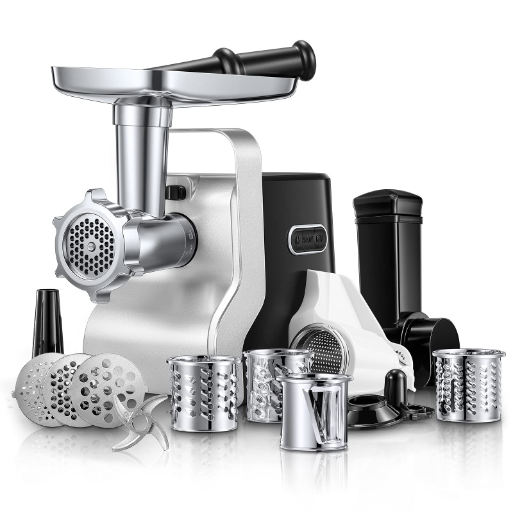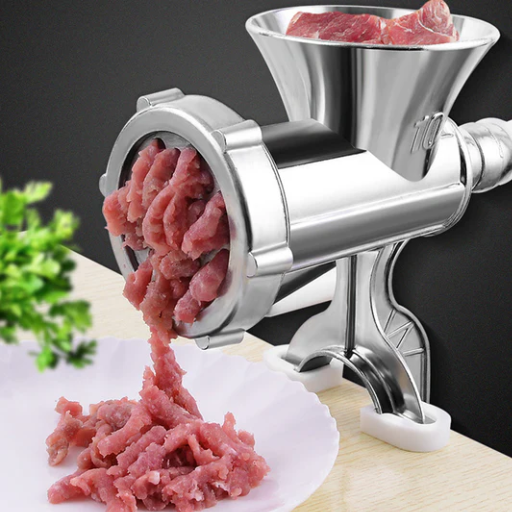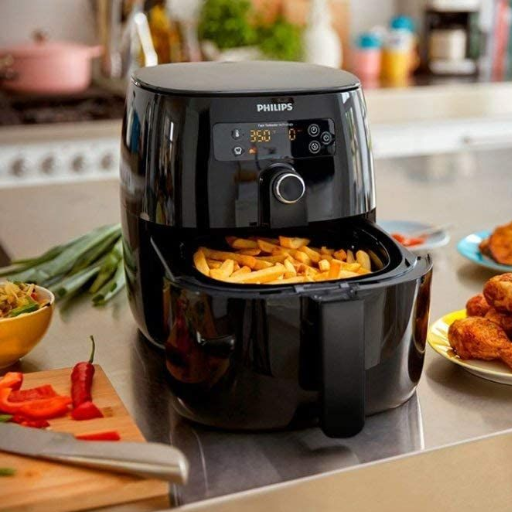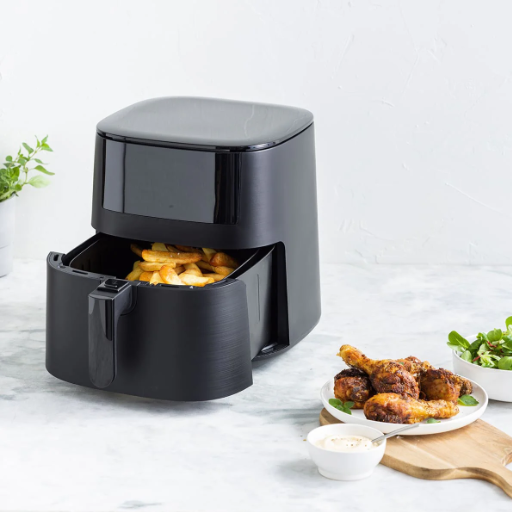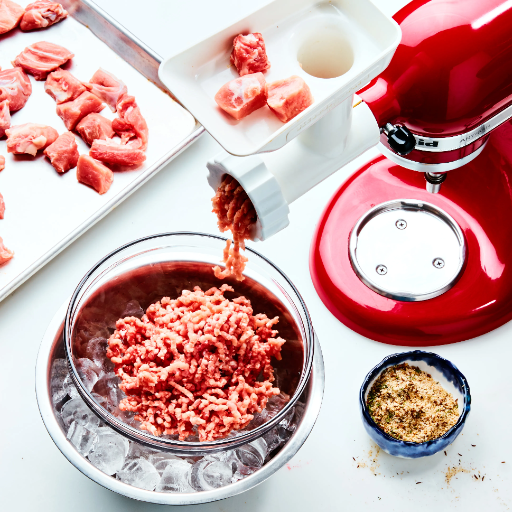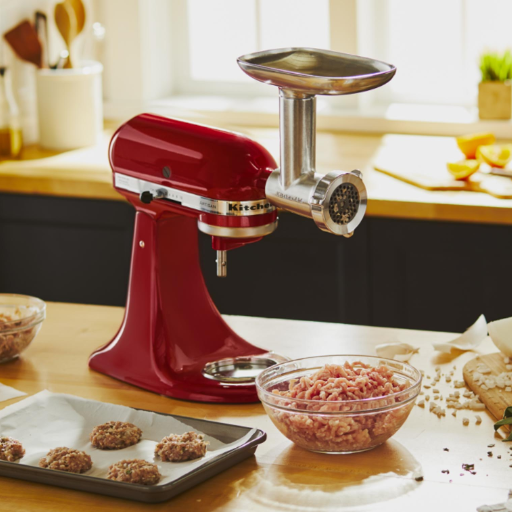In the food service, hospitality, and manufacturing sectors, investing in veritable blenders and mixers is paramount. This blog post gives an in-depth analysis of wholesale blenders and mixers, scrutinizing their usefulness, features, and benefits when purchased in bulk. We shall examine the characteristics that set apart appliances at a commercial grade from those for household usage, study the economics of bulk purchases, and learn how to select the right appliances for your operations. This guide aims to provide directors of commercial kitchens and production units with sufficient information to make intelligent buying choices that will enhance efficiency and productivity.
What Should You Look for in a Blender?

Focus on the performance and durability of the blender that will be used commercially. During prolonged operation, check to see if the motor has high power, as well as its ability to withstand heavy loads without overheating. Impact-resistant polycarbonate and stainless steel are recommended because of their durability in manufacturing jars and blades. Blenders have a scope of capacity, which should be suitable for your business needs, high volume businesses typically use larger capacity models. Enhanced versatility can be achieved with blenders that have programmable settings and variable speed controls, so remember to check the range of speed and functionality. Lastly, ensure that the industry standard safety features and NSF certification are also in place.
Understanding Blender Models and Brands
Combining brand reputation, build quality, and performance is critical when choosing the right blender model for commercial use. Industry leaders like Vitamix, Blendtec, and Waring are well-known for their powerful motors and great designs. For instance, Vitamix blenders are used for making smoothies, frozen drinks, sauces, etc due to their great programmability and powerful motors. Blendtec has also pre-programmed advanced technology blenders which can be controlled with a touch screen. These brand blenders are easy to use and are very consistent in their results. On the flip side, Waring blenders specialize in low-cost, efficient, and rugged construction that targets medium to high-volume businesses.
When selecting a model, consider the power rating in horsepower or watts to gauge whether the blender can withstand the needs of your operation. Furthermore, if the blender is to be used in customer-exposed areas, models with noise-dampening capabilities should be sought after. Finally, brands that have long warranty periods and service centers can drastically cut downtime and improve productivity. Furthermore, target services with clear guidelines and help documentation that focus on optimizing the use and understanding of the product.
Key Features of a Good Blender
- Motor Power and Performance
A good blender should have a high-performance motor, ideally ranging between 1.5 to 3 horsepower or 1000 to 1500 watts, to handle tough ingredients like ice, nuts, or frozen fruits. More powerful motors ensure smooth blending and extended durability during high-frequency usage.
- Blade Quality
Durable, stainless steel blades are essential for consistent blending results. Look for models with angled or multi-directional blades that improve efficiency by creating a vortex to pull ingredients into the blades.
- Programmability and Speed Settings
Advanced programmability and variable speed options allow for precise control over the blending process. Whether pre-programmed cycles for smoothies and soups or manual controls for custom recipes, these features enhance versatility.
- Noise Reduction Technology
For environments like cafés or open kitchens, noise-dampening designs and enclosures significantly reduce operational noise, improving the experience for both customers and operators.
- Material and Build
A high-quality blender jar made of BPA-free Tritan plastic or reinforced glass is preferred for safety, durability, and resistance to scratching or cracking. The base should be made of robust materials to withstand long-term use.
- Ease of Maintenance
A good blender should include dishwasher-safe components or come with self-cleaning functions to ensure hassle-free maintenance and hygiene.
- Warranty and Support
A long product warranty (typically 5–10 years) and access to customer support or service centers are crucial to minimizing downtime and offering peace of mind. Reliable brands will also provide thorough user manuals and helpful guidance.
By carefully evaluating these key features, businesses, and home users can make informed decisions and select a blender that meets their specific needs efficiently and effectively.
How to Ensure High Quality in Wholesale Blenders
To ensure the effectiveness of wholesale blenders, I delve into a few critical aspects. At first, I looked into the manufacturer’s brand reputation and business history, making sure to check whether they developed useful and innovative items. Subsequently, I examine whether the blender jars are made of tempered glass or BPA-free Tritan plastic to ensure safety and durability. As a bonus, I check for parts that are easy to clean, such as dishwasher-safe components and self-cleaning blenders, as these greatly improve maintenance efficiency. Furthermore, I check what type of warranty is given. I aim to find coverage that lasts 5–10 years while also looking for readily available customer service, repair, and support. Following these standards and ensuring thorough research greatly increases the chances of performance and reliability.
Where to Buy Wholesale Blenders at Competitive Prices?

Investing in wholesale blenders necessitates balancing cost with maximized value, which entails thorough research in both online and offline channels. For online suppliers, Alibaba, Global Sources, and Amazon Business serve as good starting points as they connect you with multiple manufacturers that sell goods in bulk. Suppliers are often willing to provide better rates for larger volume purchases, so communicating directly with manufacturers or distributors is more effective. Trade shows are good offline options, the International Home + Housewares Show is a notable example, as they allow buyers to meet with suppliers, evaluate their products in real-time, and establish business relationships. Local wholesale markets could have low rates, particularly for minute quantities, but the overall quality and pricing offered by international suppliers are more favorable. Blending efficient research with a direct conversation with suppliers guarantees reasonable pricing while still maintaining the required level of quality.
Top Distributors and Factories for Bulk Purchases
- Alibaba
Alibaba is one of the largest global platforms connecting buyers with manufacturers and distributors. It offers an extensive catalog of products across various industries, from electronics to household goods. The platform allows direct communication between buyers and sellers, enabling negotiations on pricing, customization options, and shipping terms. With tools like trade assurance and supplier verification, Alibaba ensures buyer confidence in the quality and authenticity of the suppliers.
- Global Sources
Global Sources specializes in connecting businesses with verified manufacturers and distributors, primarily located in Asia. The platform provides sourcing options for high-quality goods with detailed supplier profiles and certification details. Its emphasis on B2B trade ensures bulk buyers can negotiate competitive prices and receive tailored solutions for their requirements. The website also hosts virtual and live trade shows, offering direct interaction opportunities with suppliers.
- Thomasnet
Focused primarily on North America, Thomasnet is a comprehensive directory of industrial suppliers and manufacturers. It caters to businesses looking for bulk purchases in specialized sectors such as industrial equipment, electronics, and raw materials. Thomasnet provides detailed company information, including certifications, production capabilities, and client reviews, ensuring transparency and reliability in sourcing.
By utilizing these platforms, businesses can identify trusted suppliers, negotiate terms effectively, and secure quality goods at competitive prices, ensuring smooth procurement for bulk purchasing needs.
Exploring the Wholesale Prices and Deals
When exploring wholesale prices and deals, it is essential to consider platforms offering competitive pricing and reliable vendor networks. According to leading online wholesale platforms, Alibaba.com, Thomasnet, and GlobalSources.com, bulk buyers can benefit significantly from precise insights into suppliers and customizable solutions.
- Alibaba.com is a global leader known for its vast supplier database spanning industries such as electronics, fashion, and machinery. It offers transparent pricing, flexible Minimum Order Quantities (MOQs), and tools like buyer protection to ensure safe transactions.
- Thomasnet, primarily catering to North America, focuses on industrial goods with detailed supplier profiles, production capabilities, and verified certifications. Its robust search tools aid buyers in finding highly specialized products at competitive rates.
- Global Sources prioritizes international trade with an emphasis on verified sellers and end-to-end supply chain solutions. The platform highlights promotional deals and seasonal discounts, providing businesses with cost-effective procurement strategies.
By leveraging these platforms, bulk purchasers gain access to reliable suppliers, pricing visibility, and the ability to negotiate deals tailored to their requirements, streamlining the procurement process effectively.
How to Order and Ship Wholesale Blenders Effectively
To procure wholesale blenders, one must first research suppliers on platforms like Alibaba, Thomasnet, or Global Sources. These sites have verified sellers which aid in ensuring safe and reliable transactions. After choosing a supplier, assess their production capabilities, MOQs, and quality certifications. Suppliers might be willing to negotiate bulk discounts, payment terms, and lead times, which can enhance your procurement strategy.
Take into consideration the weight and size of the order of blenders and preferred shipping methods as well as delivery dates. Suppliers should be able to collaborate and package the products in a manner that ensures protection during shipping. These tasks can be simplified through seamless logistics solutions offered by the marketplaces or external freight forwarders. This also helps make customs procedures easier and mitigates the chances of delays. When available, insurance is recommended to prevent damages during shipping. Through these steps, efficiency in procurement and shipment processes for blunders can be achieved.
How to Choose the Right Commercial Blender for Your Business?

- Capacity Requirements
Determine the volume of blending required daily to choose an appropriately sized blender. Higher-capacity models are ideal for large-scale operations, while compact units suit smaller businesses.
- Power and Motor Strength
Evaluate the motor’s horsepower. High-powered motors, typically ranging from 1.5 to 3.5 HP, handle heavy-duty blending tasks efficiently, such as crushing ice or processing thick mixtures.
- Material Durability
Check for materials like stainless steel or high-quality polycarbonate for jars and blades to ensure longevity and resistance to wear in demanding environments.
- Ease of Maintenance
Opt for models with removable components and dishwasher-safe parts, as these reduce downtime and simplify cleaning.
- Noise Levels
Consider blenders with sound-dampening technology if operating in noise-sensitive environments, such as customer-facing areas.
- Versatility and Features
Look for programmable settings, variable speed controls, and pulse functions to enhance versatility across different applications.
- Budget and Warranty
Balance initial investment with long-term costs. Select a blender within budget but with a robust warranty to minimize future repair or replacement expenses.
By weighing these factors, businesses can select a blender that meets their operational needs while ensuring efficiency and reliability.
Comparing Commercial vs Home Appliances
A few important attributes such as performance, durability, and cost need to be looked at while comparing commercial blenders and home blenders. Blenders used in cafes, restaurants, or juice bars are designed to be used continuously; therefore, they can endure high-intensity workloads. These devices often have a powerful motor of around 2 to 3+ horsepower that allows them to process a large volume of ingredients. Additionally, they are constructed using heavy-duty materials such as stainless steel and reinforced polycarbonate, which enables them to withstand heavy usage over time.
Unlike commercial blenders, home blenders are built for lower intensity workloads. They are used for day-today chores, so their primary focus is convenience as well affordability. While home blenders can take care of tasks like blending smoothies or prepping basic food items, their lower motor power, which is generally under 2 horsepower, makes the device unsustainable for demanding operations.
Cost greatly matters. Commercial blenders usually cost more, but that features their strength and useable life – and those appliances can withstand heavy use. Home blenders cost less, which makes them ideal for those who merge on rare occasions, however, these appliances may not be suitable for professional settings. It should also be noted that commercial blenders usually have longer warranties and specialized repair services available for businesses’ convenience.
At the end of the day, deciding between the two depends on the specific tasks, volumes and frequency of blending which is required. Commercial users will require a lot of those blenders, therefore the cost is completely justified, whereas casual users will only ever need a standard domestic blender.
Evaluating Stainless Steel vs Plastic Options
When comparing stainless steel against plastic blender jars, each of the materials offers different benefits and disadvantages depending on the intended use. Stainless steel jars are ideal for heavy-duty blending activities such as at high temperatures. They are more durable, corrosion-resistant, and are more mechanically sound, making them very useful in professional working environments. On the downside, stainless steel jars are comparatively more expensive and do not allow for viewing. Because of this, monitoring blending progress becomes a more challenging task.
In contrast, plastic blender jars are more affordable, lightweight, and transparent. This enables users to see the blending progress without difficulty. Their performance best suits minimal and low-intensity activities, however, due to their exposure to scratches, stains, and odors, the overall life expectancy is greatly reduced. Furthermore, certain plastics are not as adept at treating extreme temperatures as stainless steel, thus, reducing their overall versatility.
In the end, the decision completely hinges on the user’s priorities. Frequent, or professional, users would almost definitely prefer the durability that stainless steel offers, however, casual or budget-limited individuals would find value in plastic.
What Are the Benefits of Portable and Electric Blenders?

Both portable and electric blenders have their intended purposes, strengths, and weaknesses based on user requirements. Portable blenders are small, lightweight, and battery-powered which makes them perfect for users who are always on the move. They are great for blending smoothies, protein shakes, or other shakes in limited amounts especially when traveling or sightseeing, and power sources are not easily available. Conversely, electric blenders are more powerful and multifunctional at a higher wattage, which provides advanced features. They are great at more heavy-duty chores such as ice crushing, blending tough ingredients, and preparing large portions. In addition, electric blenders usually have multiple speed settings and other features that offer accuracy in blending. The decision to choose either of the blenders depends on the user’s lifestyle, their regularity of use, and their blending needs.
Advantages of Portable Blenders for Fresh Juice and Smoothies
Portable blenders are great features of convenience as they are effortless for making fresh smoothies or juices wherever and whenever. They are easy to carry as they are lightweight and compact, meaning they fit perfectly in bags for travel. Many models come battery-powered or rechargeable through USB, meaning that there is no need for a power outlet. These models are particularly appropriate for single servings as they allow the user to prepare fresh drinks while minimizing waste. Besides, portable blenders are easy to clean because of their smaller size and detachable parts which saves both effort and time. For people who have brisk routines or people who travel frequently, portable blenders provide an effective, multi-functional, and convenient way of having healthy drinks.
Features to Look for in Electric Blenders
When selecting an electric blender, certain features are critical for ensuring performance, durability, and versatility. Key aspects to consider include:
- Motor Power – The motor’s wattage determines the blender’s ability to handle various ingredients. For standard blending tasks like smoothies or soups, opt for a 500-700 watt motor, while heavy-duty tasks like crushing ice or blending frozen fruits require higher wattage, typically 1000 watts or more.
- Blade Material and Design – High-quality stainless steel blades are essential for efficient blending and durability. Look for innovative blade designs, such as multi-dimensional or serrated edges, to ensure smooth and consistent results across different ingredients.
- Speed and Settings – Multiple speed options and pre-programmed settings increase the functionality of a blender. Variable speeds allow greater control over blending textures, while pulse functions are ideal for precise blending or chopping.
- Jar Capacity and Material – Consider the jar size relative to your typical serving needs. Materials like glass are sturdy and resist odors but may be heavier, while BPA-free plastic jars are lightweight and shatter-resistant, making them highly practical for busy kitchens.
- Safety Features – Models equipped with non-slip bases, overload protection, and secure locking systems ensure safe and reliable operation.
- Ease of Cleaning – A blender with dishwasher-safe components or detachable blades simplifies the cleaning process, saving time and effort.
These features should align with your blending demands, frequency of use, and lifestyle priorities to ensure optimal functionality and lasting satisfaction.
References
Frequently Asked Questions (FAQ)
Q: What types of blenders and mixers are available for wholesale purchase?
A: We offer a wide selection of wholesale blenders and mixers, including high-quality blenders, durable mixers, multifunctional kitchen appliances, and efficient juicers. Our products cater to various categories and are designed to suit your needs.
Q: Can I get more info on the kitchen appliances you offer?
A: Absolutely! We provide detailed information on each kitchen appliance, including specifications, sizes, and available models. You can email us for more specific details or to request a product catalog.
Q: Are there custom options available for wholesale kitchen equipment?
A: Yes, we offer custom options for our wholesale kitchen equipment. Whether you need a specific logo on your appliances or a custom size, we can accommodate your requests to meet your client requirements.
Q: How can I view the available blenders wholesale before purchase?
A: You can view our selection of blenders wholesale on our website, where we provide detailed product descriptions and images. If you need further assistance, don’t hesitate to contact us for a viewing appointment or a virtual tour.
Q: Do you offer commercial juicers in your product line?
A: Yes, we include commercial juicers in our product line. These high-quality juicers are perfect for making smoothies, soups, and other beverages, ensuring efficient processing of fruits and vegetables.
Q: What is the minimum order requirement for wholesale purchases?
A: The minimum order requirement varies depending on the item and category. Typically, orders are placed by carton or specific units, and we recommend contacting us directly to arrange the best selection for your needs.
Q: How do I arrange payment for wholesale kitchen appliances?
A: We accept various payment methods, including credit cards and bank transfers. Once your order is confirmed, we will provide you with a receipt detailing the payment process and any necessary steps for completion.
Q: Do you deliver wholesale kitchen appliances internationally?
A: Yes, we deliver internationally. We ensure your order is processed efficiently and offer freight options that suit your delivery needs. Please contact us for more details on shipping and delivery arrangements.
Q: Can I include my company logo on the mixers and blenders?
A: Certainly! We offer custom branding options, including adding your company logo to our mixers and blenders. This service is available for bulk orders and helps in promoting your brand effectively.
Q: Are your products made with stainless steel blades?
A: Many of our high-quality blenders and mixers come equipped with stainless steel blades. These durable blades ensure efficient processing of ingredients, making them a must-have for any commercial kitchen.


